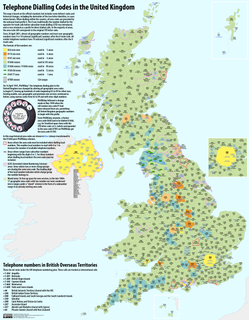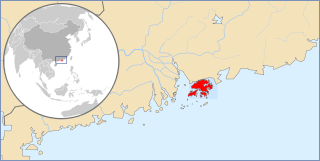External links
| Sovereign states | |
|---|---|
Dependencies and other territories | |
| | This article related to telephone numbers is a stub. You can help Wikipedia by expanding it. |
| Location | |
|---|---|
| Country | Venezuela |
| Continent | South America |
| Access codes | |
| Country calling code | +58 |
| International call prefix | 00 |
| Trunk prefix | 0 |
The Venezuelan Numbering Plan is an open telephone numbering plan with three-digit area codes and seven-digit telephone numbers that directs telephone calls to particular regions on a public switched telephone network (PSTN) or to a mobile telephone network, where they are further routed by the local network. The last revision of the current numbering plan is September 21, 2000.
Example landline calls (using Caracas as reference):
5551212 (within metropolitan area) 0212 5551212 (within Venezuela, Caracas excluded) 011 58 212 5551212 (from the U.S./Canada to Venezuela)
| State | Area Code |
|---|---|
| Amazonas | 248 |
| Anzoátegui | 281, 282, 283, 235 |
| Apure | 247, 278 |
| Aragua | 243, 244, 245, 246 |
| Barinas | 273, 278 |
| Bolívar | 235, 285, 286, 288 |
| Carabobo | 241, 242, 243, 245, 249 |
| Cojedes | 258 |
| Delta Amacuro | 287 |
| Distrito Capital | 212 |
| Falcón | 259, 268, 269 |
| Federal dependencies of Venezuela | 237 |
| Guárico | 235, 238, 246, 247 |
| Lara | 251, 252, 253 |
| Mérida | 271, 273, 274, 275 |
| Miranda | 212, 234, 239 |
| Monagas | 287, 291, 292 |
| Nueva Esparta | 295 |
| Portuguesa | 255, 256, 257 |
| Sucre | 293, 294 |
| Táchira | 276, 277 |
| Trujillo | 271, 272 |
| Vargas | 212 |
| Yaracuy | 251, 253, 254 |
| Zulia | 261, 262, 263, 264, 265, 266, 267, 271, 275 |
| Binational (Colombia) | 260, 270 |
| Operator | Area Code |
|---|---|
| Digitel | 412 |
| Movistar | 414, 424 |
| Tesan | 415 |
| Movilnet | 416, 426 |
| Digicel (formerly Elca, now Digitel) | 417 |
| Infonet (now Digitel) | 418 |
Area codes 417 and 418 were deleted in 2006 when Digicel and Infonet were bought by Digitel, migrating their subscribers to a single access code: 412.

The North American Numbering Plan (NANP) is a telephone numbering plan for twenty-five regions in twenty countries, primarily in North America and the Caribbean. This group is historically known as World Zone 1 and has the international calling code 1. Some North American countries, most notably Mexico, do not participate in the NANP.
This is a list of dialing codes in Greece. The first digit represents the type of service. 1 is used for short codes, 2 for geographical numbers, 5 is used for inter-network routing purposes and VPNs, 6 for mobile services, 7 is reserved for universal access numbers, 8 for reduced-fee services, 9 is used for premium rate services. All dialable numbers are ten digits, except for short codes, 807-XXXX used for calling card access codes, and numbers in the 5 range, used for routing purposes and not dialable by end-subscribers.
A toll-free telephone number or freephone number is a telephone number that is billed for all arriving calls instead of incurring charges to the originating telephone subscriber. For the calling party, a call to a toll-free number from a landline is free of charge.
A telephone numbering plan is a type of numbering scheme used in telecommunication to assign telephone numbers to subscriber telephones or other telephony endpoints. Telephone numbers are the addresses of participants in a telephone network, reachable by a system of destination code routing. Telephone numbering plans are defined in each of the administrative regions of the public switched telephone network (PSTN) and in private telephone networks.

Telephone numbers in the United Kingdom are administered by the Office of Communications (Ofcom). For this purpose, Ofcom established a telephone numbering plan, known as the National Telephone Numbering Plan, which is the system for assigning telephone numbers to subscriber stations.
The Australian telephone numbering plan describes the allocation of phone numbers in Australia. It has changed many times, the most recent major reorganisation by the Australian Communications & Media Authority taking place between 1994 and 1998.

The French telephone numbering plan is used in Metropolitan France, French overseas departments and some overseas collectivities.
In telecommunications, a long-distance call (U.S.) or trunk call is a telephone call made to a location outside a defined local calling area. Long-distance calls are typically charged a higher billing rate than local calls. The term is not necessarily synonymous with placing calls to another telephone area code.

Telephone numbers in Hong Kong are mostly eight-digit. Fixed land line numbers start with 2 or 3, mobile (cellular) phone numbers with 5, 6, 7 or 9, pager numbers with 7 and forwarding service with 8. Since the end of 1989, there have been no area codes within Hong Kong.

Numbers on the Irish telephone numbering plan are regulated and assigned to operators by ComReg.

Telephone numbers in Singapore, also known as the National Numbering Plan, are regulated by the Info-communications Media Development Authority (IMDA). Due to the small geographical size of Singapore, there are no area or trunk codes; all numbers belong to one numbering area, and thus come in the same 8-digit format. Numbers are categorised based on the first digit, thus providing ten possible categories, of which six are currently in use and the remaining four reserved for future usage.

The dialling plan for mobile networks and new landline operators is closed; all subscriber numbers must be dialled in full. For landline numbers starting with 02, the dialling plan used to be open; the trunk digit and area code could be omitted if the caller was in the same area code as the callee. However, starting May 3, 2008, all landline numbers must be dialled in full.
The Brazilian telephone numbering plan uses a two-digit area code plus eight-digit local phone numbers for landlines and nine digits for mobile lines. Public utility services use short phone numbers, always starting with 1.
Telephone numbers in Switzerland are defined and assigned according to the Swiss telephone numbering plan administered by the Swiss Federal Office of Communications. The plan has been changed several times and the most recent reorganization was implemented in March 2002.
Telephone numbers in Oceania use a variety of area codes to denote their location along with their own area code depending on the country's geographic makeup. They also have other prefixes to denote different types of mobile services and international calls. There are exceptions because of regional variations and time zones.

The Spanish telephone numbering plan is the allocation of telephone numbers in Spain. It was previously regulated by the Comisión del Mercado de las Telecomunicaciones (CMT), but is now regulated by the Comisión Nacional de los Mercados y la Competencia (CNMC).

Telephone numbers in Italy are managed by the Autorità per le Garanzie nelle Comunicazioni (AGCOM), a national regulatory authority for the communication industry located in Rome.

The regulation of telephone numbers in Germany is the responsibility of the Federal Network Agency of the German government. The agency has a mandate to telecommunications in Germany and other infrastructure systems.
The national conventions for writing telephone numbers vary by country. While international standards exist in the form of the International Telecommunication Union sector ITU-T issued recommendation E.123, national telephone numbering plans define the format and length of telephone numbers assigned to telephones.

A telephone number is a sequence of digits assigned to a fixed-line telephone subscriber station connected to a telephone line or to a wireless electronic telephony device, such as a radio telephone or a mobile telephone, or to other devices for data transmission via the public switched telephone network (PSTN) or other public and private networks.